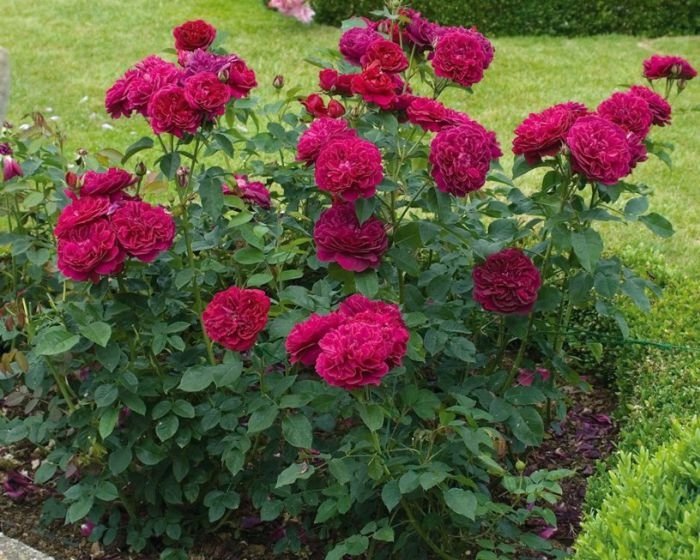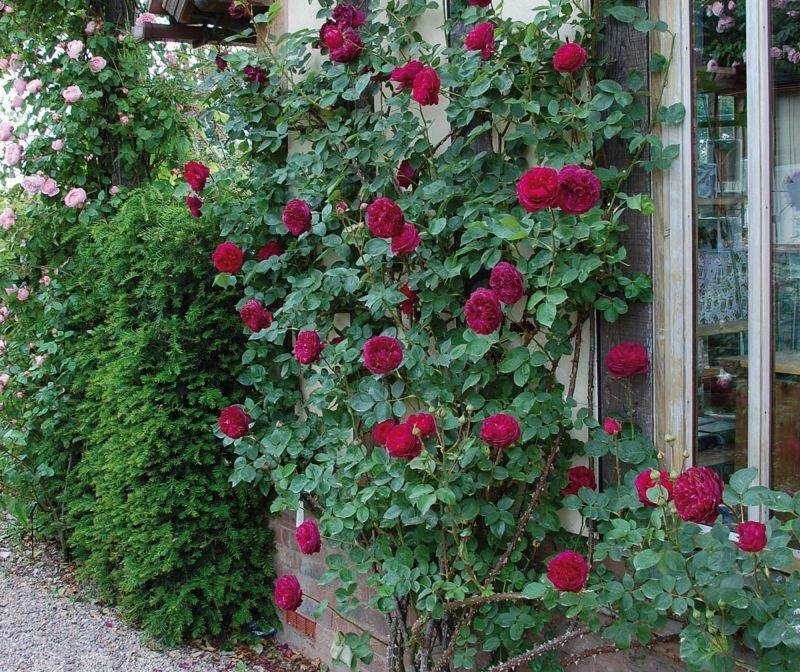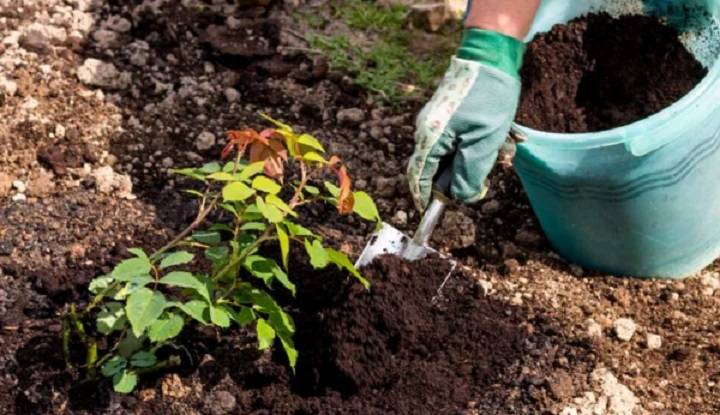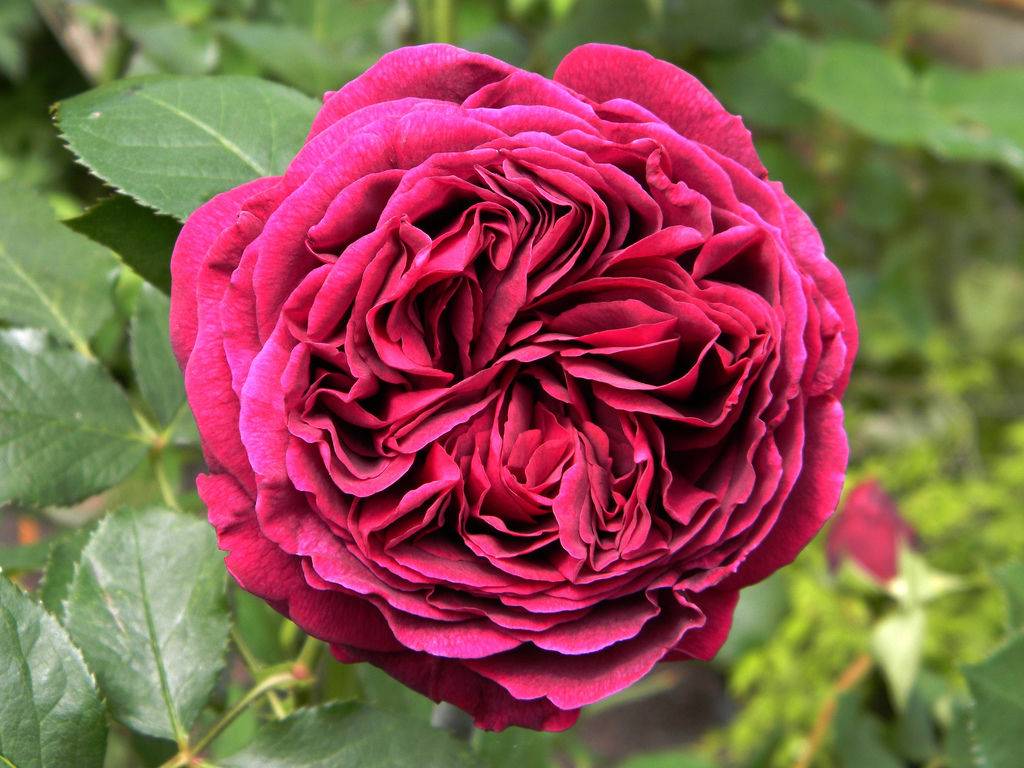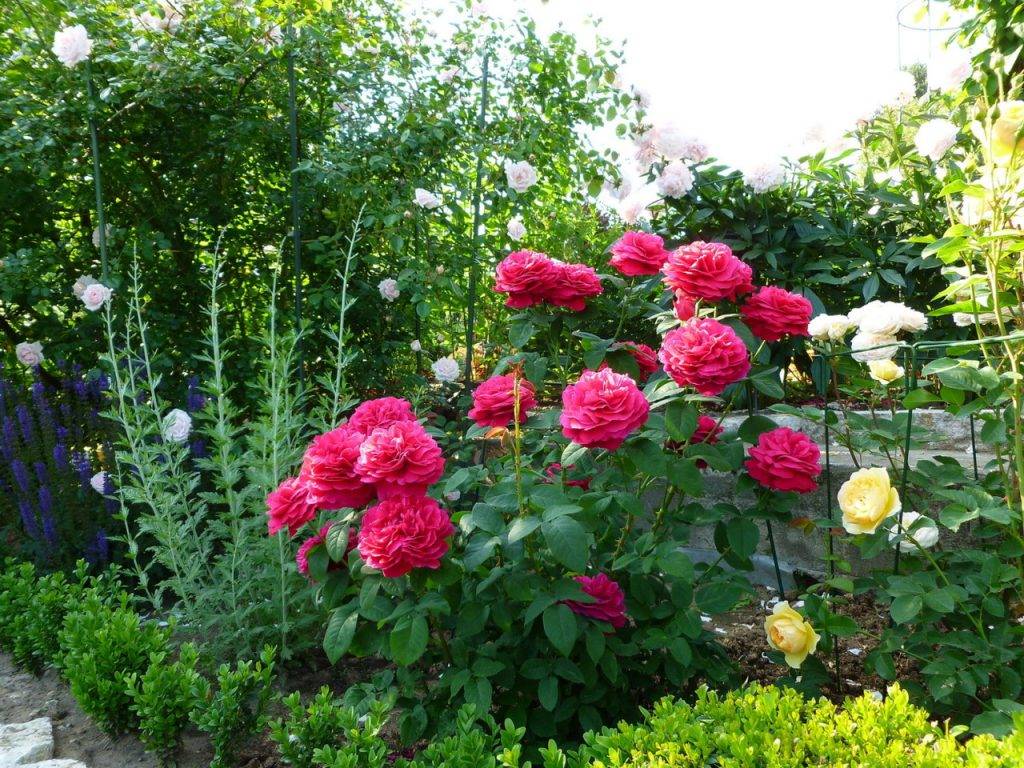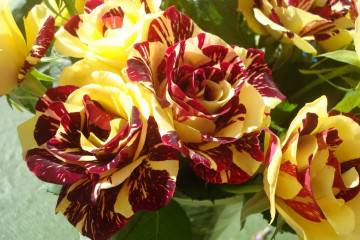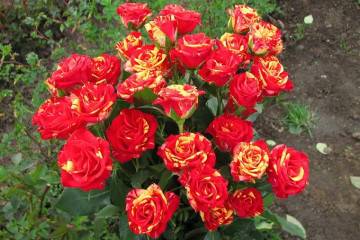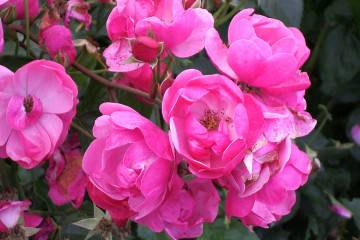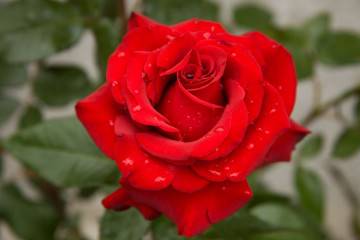Rose Falstaff - variety description
Content:
Falstaff is a variety of English roses with large buds of a noble dark lilac shade. Possesses good survival rate in latitudes with different climates. With careful care and properly selected growing conditions, the bush pleases with its abundant and long flowering.
Rose Falstaff - what is this variety
Like many varieties of English roses, Falstaff was bred by the British farmer and breeder D. Austin as a result of crossing the old varieties. Selection work was carried out specifically to obtain hybrids more resistant to frost and disease, since ordinary varieties did not meet these qualities.
Rose Falstaff was bred in 1999. The young variety is rightfully considered the most beautiful and persistent among the other varieties.
Brief description and characteristics
The shrub grows up to 1.5 m in height and grows by the same amount in width. Erect shoots have small oval leaves of a beautiful dark green color. Their surface is smooth and glossy. The stems have not very long sharp thorns.
Large double rose buds can be up to 15 cm in diameter. One flower contains from 20 to 40 dense dark crimson petals. As they bloom, they take on a slightly purple hue.
Advantages and disadvantages of the variety
The English rose Falstaff is a versatile plant that has mainly some advantages.
Pros:
- abundant and long flowering;
- beautiful bud shape with rich color;
- neat leaves;
- high resistance to low temperatures;
- the buds do not fade in the sun;
- not susceptible to disease.
Use in landscape design
Falstaff English park rose is widely used in landscape design. This flower is unique in that it looks beautiful without the rest of the ornamental plants planted nearby. The bush has lush foliage and many buds, so it is often used to decorate home gardens, gardens and parks.
Falstaff looks beautiful with low deciduous shrubs and other types of roses. The flower is often used to create hedges and decorate arches in gardens.
Growing a flower
Planting the Austin Falstaff rose is carried out without much difficulty, since the plant quickly adapts to new conditions.
A bush rose is usually planted with seedlings. This method does not require much effort and does not take a long time, like planting a bush by sowing seeds. Moreover, seed germination usually has a small percentage.
Seat selection
The place for growing a bush must be protected from the piercing northerly winds. Therefore, it is better to plant bushes next to buildings. It is also worth considering the quality of the soil, which should be a meter higher than the passage of groundwater underground.
How to prepare the soil and flower for planting
Before planting, the roots of the seedlings must be placed in a special saline solution or ordinary clean water at room temperature. Rotten and dry areas must be removed.
The nutrient substrate is prepared from loose earth, humus, rotted manure and peat.
Planting procedure step by step
How to land:
- Dig holes at a distance of 1 m from each other and a depth of about 50-60 cm.
- A small layer of drainage tinker is poured into the bottom.
- Then evenly distribute the substrate with a layer of about 5 cm.
- Seedlings are placed on top.
- Fall asleep with the remaining substrate.
- Watering.
Plant care
Rose Falstaff care is easy and simple, the main thing is to carry out all activities regularly and not overdo it with care.
Watering rules and humidity
Watering should be carried out 1-2 times a week with water settled in the sun. About a bucket of water is consumed for each plant.
The bush is not particularly picky about humidity, its buds do not have the habit of fading in the sun. But in especially dry periods, it is recommended to spray the bush from time to time to refresh and clean it of dust.
Top dressing and soil quality
From the second year after planting the Falstart rose in open ground, it is necessary to begin to carry out regular fertilizing with mineral fertilizers. The first time this procedure is carried out in the spring, for this, the soil is watered with a mullein solution. Then, before the buds bloom, you need to fertilize the rose with nitrogen fertilizer. During flowering, potassium-phosphorus dressings are very useful.
For faster absorption of nutrients, it is recommended to loosen the soil to a depth of 5 cm twice a month. The same procedure will help to avoid stagnation of moisture in the ground.
Pruning and replanting
It is not necessary to cut the rose, this is done only if you want to achieve very bright and abundant flowering. In this case, several young shoots are cut off before flowering.
The plant grows well without transplants in one place, only on condition of regular fertilization.
Extreme measures for which an immediate transplant is necessary:
- improperly selected growing place;
- stagnation of moisture, as a result of which root rotting begins;
- disease.
Blooming rose
The budding is the most important Falstaff event of the season.
A period of activity and rest
The shrub begins to bloom in early or mid-summer, but it all depends on the growing area. Flowering lasts almost all summer and only by the beginning of autumn the last buds fade.
The plant enters the dormant stage with the onset of the first frosts. During this period, it is necessary to have time to carry out all the necessary care procedures and send the rose for the winter.
Care during and after flowering
During flowering, regular watering does not stop, but after each procedure they try to loosen the soil. Stagnation of moisture adversely affects the ability to bloom. Also, during this period, fertilizing with nitrogen fertilizers is stopped and no pruning is carried out.
What to do if it does not bloom
Falstaff rose may not bloom for the following reasons:
- excessive soil moisture;
- long dry period;
- lack of watering;
- lack of nutrients in the soil;
- diseases and pests.
Waterlogging of the soil can be eliminated by regular loosening. During a drought, you just need to increase the frequency of watering. It is necessary to fertilize the plant with both mineral and organic fertilizers. If the plant is struck by a viral disease, it must be transplanted to another place and treated with fungicides. The bush is treated with insecticides from pests.
Flower propagation
At home, it is more convenient to propagate a rose by cuttings.
Cuttings should be cut in the first half of summer during the first wave of flowering of the bush.
15-centimeter cuttings are cut from young and strong shoots. The lower leaves are removed and dropped into a nutritious substrate, you can immediately plant it in open ground. From above you need to cover them with a plastic cap or film. Periodically, the cuttings are watered and ventilated.
Diseases, pests and ways to control them
The cultivar has a low likelihood of getting sick or suffering from pests, but with poor care, these problems can appear.
Diseases and pests affecting Falstaff and how to deal with them:
- powdery mildew causes white bloom on the leaves. Destroyed by processing with topaz or foundation;
- rust appears as small brown dried spots on foliage. It is treated with the drug tompsin-M;
- peronosporosis is characterized by the appearance of yellow spots with a gray coating. Topsin-M is also used for treatment;
- the aphid eats leaves, destroys it with actellik;
- spider mites appear in summer and cover leaves with shoots with cobwebs. When fighting, phytoverm is used.
Outwardly, the description of the Falstaff rose is slightly different from other species, and it has more advantages than other varieties. A beautifully flowering plant is capable of ennobling any area and does not require troublesome care in return.
